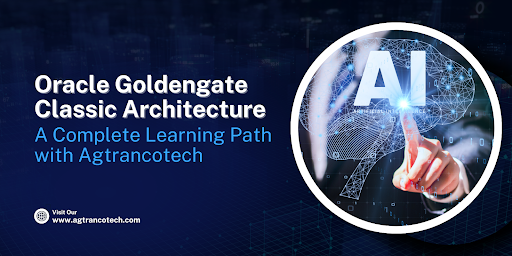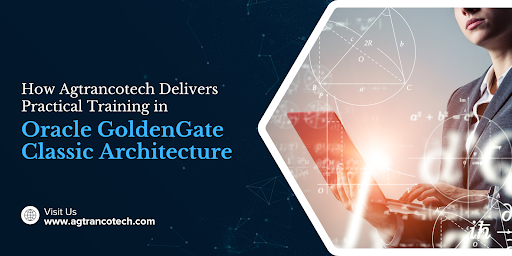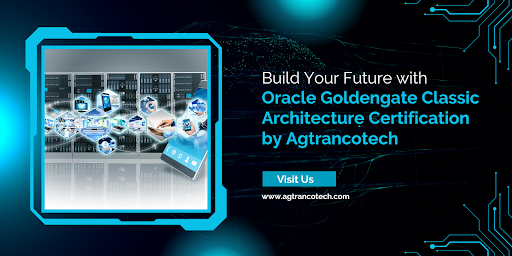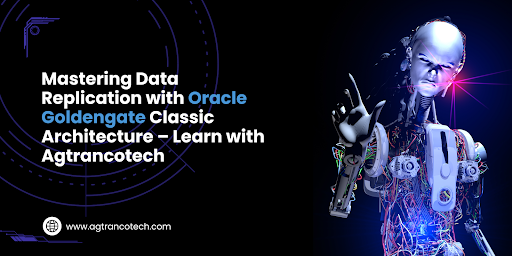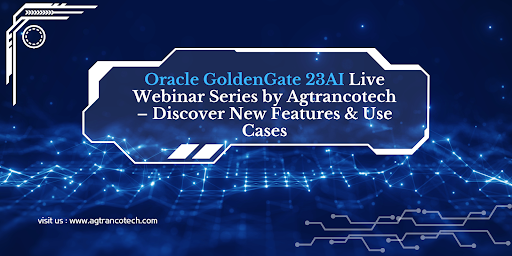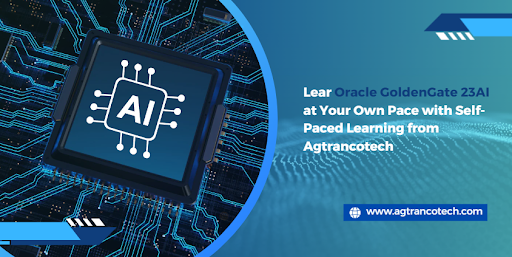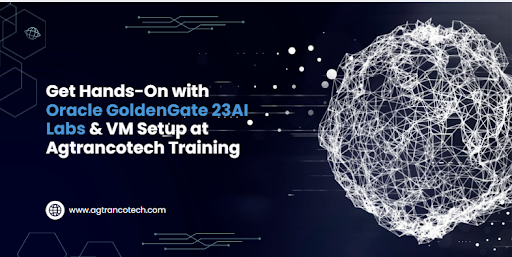Oracle Goldenate Classic Architecture
In the relentless flow of modern business, data is the lifeblood. But data in motion—real-time, reliable, and resilient data replication—is what powers the heart of critical operations, from high-availability disaster recovery to real-time analytics and zero-downtime migrations. For decades, one technology has stood as the undisputed leader in this complex domain: Oracle GoldenGate. While the landscape evolves with microservices and cloud-native solutions, a deep, foundational understanding of the robust Oracle Goldengate Classic Architecture remains an invaluable asset for any data professional.
This article serves as a comprehensive guide to mastering this foundational architecture. We will deconstruct its components, trace the path of a transaction, and outline a structured learning path to achieve proficiency. Furthermore, we will explore how specialized training from experts, notably the focused curricula offered by Agtrancotech, can dramatically accelerate this learning journey.
Why Oracle Goldengate Classic Architecture Still Matters
The classic architecture, often referred to as the “Classic Deployment,” is the bedrock upon which GoldenGate was built. Before the sleek GUI of the Microservices Architecture (introduced in version 12c), there was a powerful, script-driven engine that offered unparalleled control and flexibility. Understanding the classic model is crucial because:
- Foundational Knowledge: The core concepts of capture, trail files, and delivery are identical across deployments. Mastering the classic approach makes learning the newer microservices model significantly easier.
- Troubleshooting Prowess: Many production environments still run on the classic architecture. Deep knowledge is essential for effective troubleshooting and performance tuning.
- Ultimate Control: For purists and those dealing with highly complex environments, the command-line interface (GGSCI) of the classic architecture provides a granular level of control.
Simply put, you cannot truly master Oracle GoldenGate without a firm grasp of its classic roots.
Deconstructing the Oracle Goldengate Architecture
The elegance of the Oracle Goldengate Architecture lies in its logical separation of capture and delivery processes. It operates on the principle of “non-invasive” data movement, reading database transaction logs rather than the source tables themselves, ensuring minimal performance impact.
The entire system can be broken down into a few key components on both the source and target systems.
On the Source System:
- Extract: This is the capture mechanism. The Extract process continuously scans the database’s online redo logs or archive logs, capturing committed data changes (DML) and data definition changes (DDL, if configured). It acts as a intelligent miner, extracting only the relevant data based on predefined parameters.
- Trail Files: The extracted data isn’t sent directly to the target. Instead, it is staged in a series of files on the disk known as trail files (or extract files). These files are the backbone of GoldenGate’s reliability, acting as a persistent queue. They ensure that no data is lost if the network fails or the target system is unavailable. The classic architecture typically uses a local trail file on the source before a data pump sends it.
- Data Pump (Secondary Extract): While an optional component, a Data Pump is considered a best practice in most configurations. It is a secondary Extract process that reads the primary trail file and sends the data across the network to the target system. This abstraction provides significant benefits: it allows the primary Extract to focus solely on log reading, and it enables network firewall traversal and data filtering.
On the Target System:
- Remote Trail Files: The data sent by the Data Pump is written to trail files on the target system’s disk. This decoupling is critical; the target database can be down for maintenance without affecting the capture of changes on the source.
- Replicat: This is the delivery mechanism. The Replicat process reads the remote trail files, reconstructs the SQL statements or uses native database APIs, and applies the changes to the target database. It is responsible for ensuring transactional consistency and handling conflicts based on configuration.
The Manager Process: Overseeing this entire operation on both source and target is the Manager process. It is the control center—it starts, stops, and monitors all other GoldenGate processes and manages the trail files.
A Transaction’s Journey Through the Oracle Goldengate Classic Architecture
Let’s humanize this flow by following a single statement:
- Commit on Source: A user updates a customer’s phone number in the source database and commits the transaction.
- Log Capture: The database writes this change to its redo log.
- Extract in Action: The GoldenGate Extract process, which is continuously reading the redo log, captures this committed change. It filters out any uncommitted data.
- Staging in Trail: The Extract writes the transformed (if any rules are defined) or untransformed record of this change to a local trail file on the source server.
- Data Pump Relay: The Data Pump process picks up this record from the local trail and transmits it securely over the network to the target server.
- Target Staging: On the target server, the data is written to a remote trail file.
- Replicat Delivery: The Replicat process reads the record from the remote trail file, constructs the equivalent statement tailored for the target database, and applies it.
- Data Synchronized: Within seconds, the target database now reflects the new phone number. The systems are synchronized.
This seamless, automated flow is the magic of the Oracle Goldengate Classic Architecture.
The Learning Path: From Novice to GoldenGate Professional
Mastering this architecture requires a structured approach. Here is a recommended learning path:
Phase 1: Foundation (Understanding the “What” and “Why”)
- Prerequisites: Solid understanding of relational databases (preferably Oracle), SQL, and basic Linux/Unix commands.
- Objective: Grasp the core concepts of high-availability, data replication, and the business problems GoldenGate solves.
Phase 2: Core Components Deep Dive (Understanding the “How”)
- Objective: Gain detailed knowledge of each component—Manager, Extract, Data Pump, Replicat, and Trail Files. Learn the configuration parameters for each.
- Key Skill: Learning to navigate the GoldenGate Software Command Interface (GGSCI).
Phase 3: Hands-On Configuration
- Objective: Install GoldenGate and build a basic unidirectional replication from scratch. This includes adding transaction data (TRANDATA), creating Extract, Data Pump, and Replicat processes.
- Key Skill: Writing parameter files and using GGSCI commands to create and start processes.
Phase 4: Advanced Concepts & Troubleshooting
- Objective: Move beyond basics to handle real-world scenarios. This includes:
- Initial Data Load: Using GoldenGate or database utilities for the initial synchronization.
- Bidirectional/Active-Active Replication: Understanding conflict detection and resolution (CDR).
- Data Transformation: Filtering and manipulating data in flight.
- Troubleshooting: Learning to read report files, discard files, and log files to diagnose and resolve errors.
Phase 5: Performance Tuning & Production Readiness
- Objective: Optimize GoldenGate for high-volume environments. Learn to tune Extract and Replicat parallelism, manage trail file sizes, and implement robust monitoring.
Accelerating Your Journey with Agtrancotech
Navigating this learning path alone can be daunting. This is where specialized training providers like Agtrancotech prove invaluable. Agtrancotech has carved a niche for itself by offering focused, in-depth training on core Oracle technologies, with a pronounced expertise in data integration and replication.
A high-quality training program, such as one offered by Agtrancotech, transforms theoretical knowledge into practical, actionable skill. Instead of just reading about parameter files, you get to write them in a controlled lab environment. Instead of just understanding the concept of a Data Pump, you configure one and see how it handles a network interruption.
The key benefits of engaging with a specialized training provider include:
- Structured Curriculum: The entire learning path is condensed into a logical, well-sequenced course, saving you from piecing together information from fragmented online sources.
- Expert-Led Instruction: Learning from instructors who have implemented GoldenGate in complex, real-world scenarios provides context that pure documentation cannot.
- Hands-On Labs: Theory without practice is futile. A good course provides extensive lab access to build, break, and fix configurations, cementing your understanding.
- Troubleshooting Focus: Courses from practitioners at Agtrancotech often emphasize common pitfalls and troubleshooting techniques, which is the most critical skill for a production support role.
By leveraging the focused training methodologies of Agtrancotech, aspiring data engineers and DBAs can fast-track their proficiency in the Oracle Goldengate Classic Architecture, gaining the confidence to design, implement, and manage robust data replication solutions.
Conclusion: A Timeless Foundation for a Modern World
The Oracle Goldengate Classic Architecture is more than a legacy deployment; it is the conceptual blueprint of a powerful data movement engine. Its principles of decoupled capture and delivery, persistent queuing via trail files, and process-based architecture are timeless. While new interfaces and deployment models emerge, this foundational knowledge remains the differentiator between someone who can run commands and someone who truly understands how to architect a resilient, enterprise-grade data replication solution.
Investing time in mastering this architecture, potentially through a targeted program with an expert partner like Agtrancotech, is an investment in a skill set that will remain relevant for years to come, forming the solid ground upon which you can build expertise in the ever-evolving data landscape.
About Agtrancotech
Agtrancotech is a premier provider of technical training and consulting services, specializing in Oracle technologies, data management, and cloud solutions. With a mission to bridge the skill gap in the IT industry, Agtrancotech offers a comprehensive portfolio of courses designed by industry experts. Their training programs are renowned for a strong emphasis on hands-on learning, real-world scenarios, and practical troubleshooting skills, ensuring that participants are not just certified but are truly job-ready.
For professionals seeking to master complex technologies like Oracle GoldenGate, Agtrancotech provides a structured learning environment that combines deep theoretical knowledge with extensive practical labs. To explore their course offerings and how they can accelerate your career

